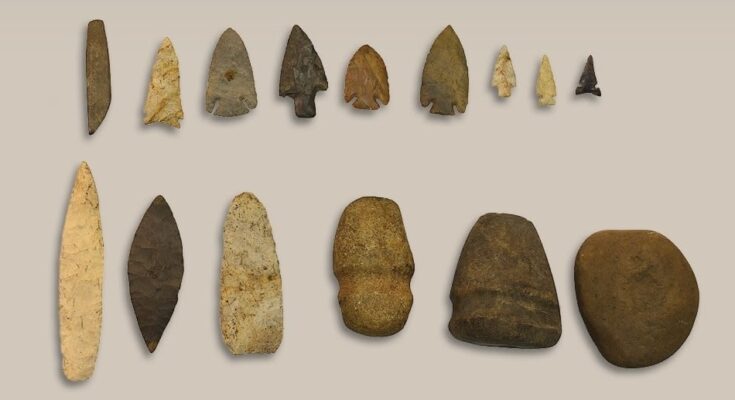
A recent railroad project on the Danish island of Falster has revealed an ancient site dating back 5,000 years. Archaeologists discovered a stone-paved root cellar from the Neolithic period, showcasing advanced building skills among early farming communities.
Researchers from the Museum Lolland-Falster and Aarhus University, Denmark, studied the site, with findings published in the journal Radiocarbon. This discovery relates to the Funnel Beaker Culture, which emerged around six thousand years ago.
The era marked a major shift towards farming, animal domestication, and permanent settlements. It also led to the construction of homes and large stone graves, moving away from a mobile hunter-gatherer lifestyle.
Evidence of house construction in two stages
At Nygårdsvej 3, evidence of two stages of house construction was uncovered. Both structures followed the “Mossby-type” design, using interior posts to support large roofs.
In the first phase, 38 post holes were found, while 35 were found in the second. The floors were made of compacted loam, a mix of sand and clay. Although loam had been used in other regions, it was new to these Neolithic Danes. Even today, over a billion people still use loam floors in their homes.
The site’s location on a slight elevation provided both a strategic view and protection from flooding from nearby bogs and streams. This was likely a deliberate choice for the settlement.
Discovery of stone-paved cellar and artifacts
More than one thousand artifacts were found at the site, including flint tools, pottery fragments, and two fossilized sea urchins. These objects were mostly concentrated around a stone-paved sunken area. It is unclear whether these items were deliberately placed there or if they accumulated naturally over time.
The most notable discovery was this sunken stone-paved feature. Researchers believe it might have been a cellar, ruling out other possibilities. If this turns out to be true, it would show a significant advancement in how the people of that time stored their food.
Underground cellars help keep temperatures steady, protecting food from extreme heat in summer and freezing cold in winter. For early farmers, this would have been a huge benefit, allowing them to store food for longer periods and survive between harvests, especially during harsh winters.
Radiocarbon dating and additional discoveries
Radiocarbon dating indicates that both the cellar and the first phase of house construction occurred between 3080 and 2780 BC. The second phase followed after 2800 BC.
Archaeologists also discovered seven rows of post holes, possibly for an exterior fence. This fence could have been used for farming, landscape control, or protection. Interestingly, the fence predates the houses by several hundred years, dating back to between 3600 and 3500 BC, indicating that the area had long been of strategic importance.
The discovery of the root cellar raises more questions than answers. Further excavations are planned to uncover more details about life during the early Funnel Beaker Culture in Denmark.



